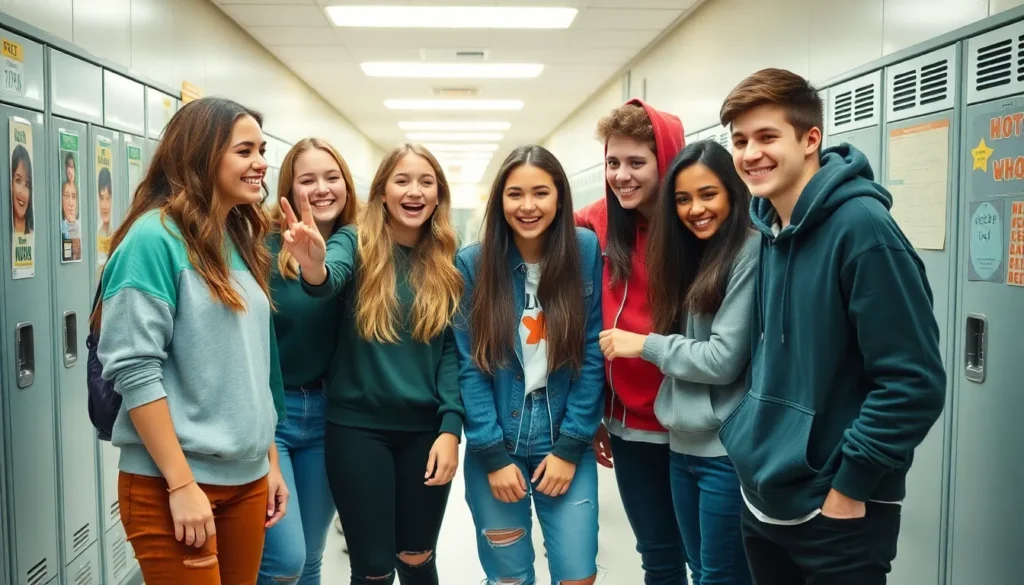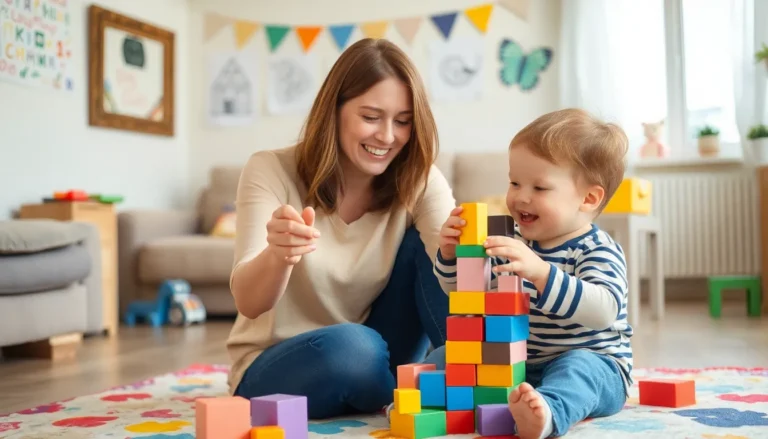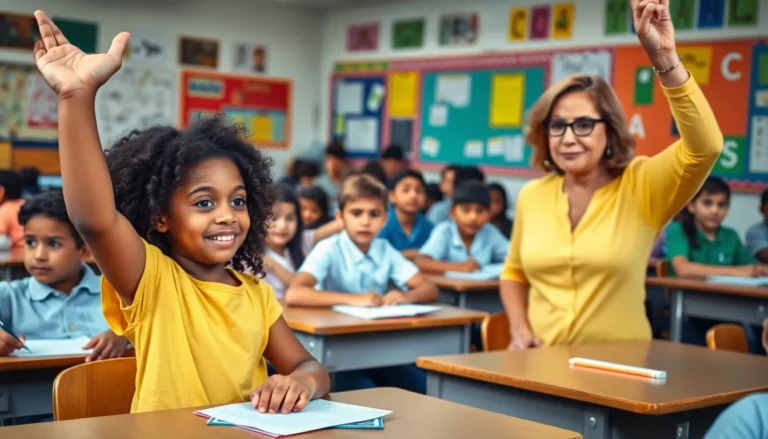Table of Contents
ToggleHigh school friendships are like a rollercoaster ride—full of ups, downs, and the occasional scream. These connections can shape personalities, influence choices, and create memories that last a lifetime. Whether it’s sharing secrets in the cafeteria or pulling all-nighters before exams, the bonds formed during these formative years are nothing short of legendary.
But let’s be real: navigating the social scene can feel like a game of dodgeball. One minute you’re on top of the world, and the next, you’re dodging drama like it’s a flying ball. Yet, despite the challenges, high school friendships offer invaluable lessons in loyalty, empathy, and even how to survive awkward moments. Dive into the world of teenage camaraderie and discover why these friendships are the ultimate rite of passage.
Understanding High School Friendships
High school friendships play a vital role in shaping social skills and emotional intelligence. These connections provide support and belonging during a critical developmental period.
The Importance of Friendships in Adolescence
Friendships in adolescence contribute to emotional resilience. Supportive peers offer a network that helps individuals navigate challenges. Research shows strong friendships enhance self-esteem and foster a sense of identity. The bonds formed during high school create a foundation for future relationships. These friendships can influence academic performance and encourage positive behavior. Trust and loyalty emerge as essential qualities, reinforcing mutual understanding. Adolescents often rely on friends for advice and guidance, making these connections crucial for personal growth.
Common Types of Friendships in High School
Friendships in high school can be categorized into several types. Close friendships involve sharing personal thoughts and feelings with a small group. Casual friendships are built around shared activities, like classes or clubs. Loyalty-focused friendships concentrate on mutual support and trust during tough times. Social cliques often form based on interests, hobbies, or social status. These dynamics influence students’ experiences and can lead to feelings of inclusion or exclusion. Friendships among different grades foster mentorship opportunities, enriching the social atmosphere. Each type of friendship impacts personal development and social interactions.
The Dynamics of High School Friendships

High school friendships carry unique dynamics that shape emotional and social experiences. They evolve through mutual support, trust, and the occasional conflicts that test bonds.
Building Trust and Support
Trust forms the foundation of high school friendships. Friends often share secrets, dreams, and fears, fostering closer connections. Support comes in various forms, whether it’s showing up for a friend during a tough test or cheering them during a sports game. These moments create strong ties, making friends invaluable sources of encouragement. Such support contributes significantly to emotional well-being and resilience. Relationships built on trust encourage teens to express themselves openly, enhancing their confidence. Friends serve as sounding boards for ideas and aspirations, reinforcing the importance of a solid support system during formative years.
Navigating Conflicts and Challenges
Navigating conflicts presents challenges in high school friendships. Disagreements often arise over trivial matters, but their impact feels significant. Addressing issues directly can prevent misunderstandings and strengthen bonds. Effective communication plays a crucial role, prompting friends to express their feelings and resolve disputes amicably. Teens learn essential problem-solving skills when facing these challenges together. Conflicts highlight differing perspectives, enhancing social awareness and empathy. Friends who work through conflicts often emerge with a deeper understanding of each other. These experiences build resilience and prepare individuals for future social interactions beyond high school.
The Impact of Social Media on High School Friendships
Social media profoundly influences high school friendships, offering both opportunities and challenges.
Positive Aspects of Social Media
Connectivity stands out as a significant benefit of social media. Platforms like Instagram, Snapchat, and TikTok enable teens to maintain relationships outside school hours. Shared experiences and memories become easily accessible, allowing friends to bond over posts and comments. Additionally, social media facilitates group communication, making it simpler to organize events or support each other during tough times. Instant feedback on personal achievements fosters a sense of belonging. Engagement with diverse peer groups encourages empathy and understanding regarding different perspectives.
Potential Risks and Downsides
Despite its advantages, social media also presents risks for high school friendships. Cyberbullying remains a prevalent issue, potentially leading to emotional distress and isolation. Miscommunication often arises from text-based interactions, leading to misunderstandings or conflicts. Comparisons to curated online lives can trigger feelings of inadequacy and low self-esteem among peers. Moreover, excessive screen time may limit face-to-face interactions, weakening emotional connections. Real-life social skills can suffer when interactions primarily occur in the digital realm, impacting overall relationship dynamics.
Maintaining Friendships After High School
Maintaining friendships after high school requires intentional effort. Friends must prioritize regular communication and shared experiences to keep connections strong.
Strategies for Staying Connected
Utilizing technology enhances relationship building. Group chats on platforms like WhatsApp or social media provide easy ways to share updates. Scheduling regular meet-ups, whether for coffee or virtual hangouts, fosters ongoing engagement. Setting reminders for important events, such as birthdays, shows thoughtfulness. Participating in group activities or travel together strengthens bonds.
The Role of Friendships in Adult Life
Friendships continue to play a critical role in adult life. They provide essential support during significant life changes like career shifts or family matters. Close friendships contribute to overall well-being and emotional health, offering space for honest conversations and shared experiences. Developing social networks through friendships can enhance personal growth and professional opportunities. Maintaining these relationships often leads to a sense of belonging that positively impacts happiness.
High school friendships are more than just social interactions; they play a pivotal role in shaping one’s identity and emotional landscape. These connections foster essential life skills like empathy and communication. Navigating the ups and downs of these relationships teaches valuable lessons that extend far beyond the classroom.
The influence of social media adds another layer to these dynamics, offering both opportunities for connection and challenges that can complicate friendships. As students transition into adulthood, the effort to maintain these bonds becomes crucial for ongoing emotional support and personal growth. Ultimately, the experiences gained through high school friendships lay the groundwork for a fulfilling social life in the years to come.







